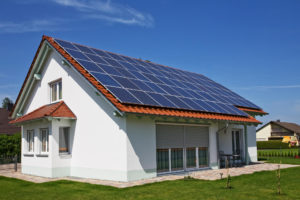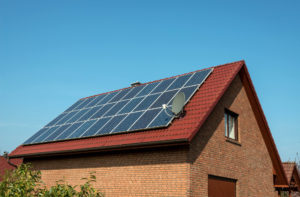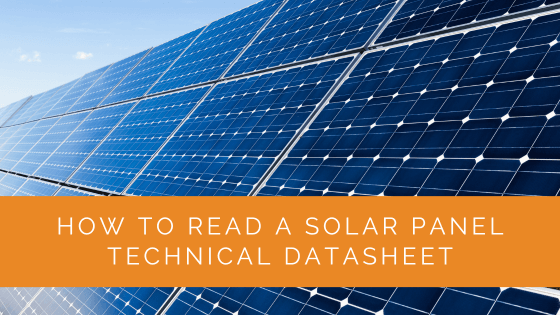Solar panels are the backbone of any solar energy system. To make informed decisions when purchasing solar panels, it’s essential to understand their technical datasheets. These datasheets provide crucial information about a panel’s performance, specifications, and more. In this article, we will guide you on how to read a solar panel technical datasheet, empowering you to optimize the performance of your solar energy system.
Contents
- 1 Key Takeaways
- 2 Why Solar Panel Datasheets Matter
- 3 Understanding Key Specifications
- 4 Performance and Environmental Data
- 5 Additional Considerations
- 6 Understanding Solar Panel Specifications
- 6.1 The Maximum Power (Pmax)
- 6.2 The Optimal Voltage (Vmp)
- 6.3 Power Tolerance
- 6.4 Maximum Voltage (Max Voltage)
- 6.5 No-Load Voltage (Voc)
- 6.6 Ideal Intensity (Imp)
- 6.7 Maximum Current in Short Circuit (Isc or Icc)
- 6.8 Applicable Temperature Coefficients
- 6.9 Operating Temperature
- 6.10 Weight of the Solar Panel
- 6.11 Maximum Surface Load
- 6.12 Photovoltaic Cell Type
- 6.13 Hail Resistance
- 7 Experience Solar Excellence with Us!
- 8 Conclusion
Key Takeaways
- Understanding solar panel specifications from datasheets is crucial for making informed decisions when investing in solar panels, helping evaluate options based on energy needs, efficiency, and budget.
- Key specifications to focus on include power output, efficiency, dimensions, weight, voltage, current ratings, and certifications, all vital for planning and designing an efficient solar energy system.
- Considerations like installation guidelines, warranty, product support, temperature coefficients, cell type, hail resistance, and operating temperature are essential for optimizing the performance and longevity of your solar panel installation.
Why Solar Panel Datasheets Matter
When investing in solar panels, it’s vital to understand their specifications and capabilities clearly. Solar panel datasheets are valuable, helping you evaluate and compare different options effectively. By studying these datasheets, you can make well-informed decisions aligning with your energy needs, efficiency requirements, and budget constraints.
Understanding Key Specifications
Power Output
The power output specification is one of the most critical aspects of a solar panel datasheet. It represents the maximum power, usually measured in watts (W), that the panel can produce under standard test conditions (STC). Additionally, the power tolerance indicates the acceptable deviation from the specified power output. A lower power tolerance ensures greater accuracy in panel performance.
Efficiency
Solar panel efficiency measures how effectively it converts sunlight into electricity. Efficiency is expressed as a percentage and indicates the panel’s ability to generate power per square meter of surface area. Higher-efficiency panels typically occupy less space and perform better in limited installation areas. It’s essential to differentiate between module efficiency, which considers the entire panel, and cell efficiency, which focuses on individual solar cells.
Dimensions and Weight
Understanding solar panels’ physical dimensions and weight is crucial for planning installations. The dimensions provide an idea of the space required, while the weight affects the structural load and ease of handling during installation. Considering these factors, you can ensure the panels fit your intended installation area and can be accommodated by your mounting structure.
Electrical Characteristics
Solar panel datasheets also provide information about the panel’s electrical characteristics, including voltage and current ratings. The open-circuit voltage (Voc) represents the maximum voltage the panel can produce when not connected to a load. At the same time, the short-circuit current (Isc) indicates the maximum current under the same condition. These values are essential for designing an efficient solar energy system and selecting appropriate charge controllers.

Performance and Environmental Data
Temperature Coefficients
Temperature coefficients significantly affect a solar panel’s performance under varying temperature conditions. The temperature coefficient of voltage (TC Voc) measures the change in open-circuit voltage concerning temperature. In contrast, the temperature coefficient of power (TC Pmax) represents the variation in maximum power output. Understanding these coefficients allows you to assess how well the panel will perform in real-world temperature scenarios.
Power Performance
Over time, solar panels undergo a certain degree of power degradation. The degradation rate specifies the annual power loss and helps determine the panel’s expected performance over its lifespan. Manufacturers often provide warranties that guarantee the panel’s performance for a specified period, offering peace of mind and ensuring long-term value.
Environmental Certifications
When evaluating solar panels, it’s crucial to consider environmental certifications that ensure product quality, safety, and adherence to industry standards. Look for certifications such as the International Electrotechnical Commission (IEC), Underwriters Laboratories (UL), and Technischer Überwachungsverein (TUV). These certifications verify that the panels meet rigorous quality and safety requirements, assuring their reliability and performance.
Additional Considerations
Installation Guidelines
Solar panel datasheets may provide general installation guidelines, highlighting key considerations and best practices. These guidelines cover panel orientation, tilt angle, shading avoidance, and proper mounting methods. Adhering to these recommendations can significantly improve the performance and longevity of your solar energy system.
Warranty and Product Support
Solar panel warranties vary among manufacturers, covering different aspects of the product, such as power output, materials, and workmanship. Understanding the warranty terms is crucial to ensure protection and peace of mind in case of any unforeseen issues. Additionally, consider the manufacturer’s availability of product support and customer service. Having reliable support can greatly assist you in troubleshooting and resolving any technical concerns that may arise.

Understanding Solar Panel Specifications
When exploring the technical sheets of photovoltaic panels, you may come across various terms such as “Pmax,” “Vmp,” “Voc,” and “Isc.” These terms hold important information about your solar panel’s performance; understanding them is crucial for optimizing your photovoltaic installation. This section will explain the significance of these specifications and how they impact your energy production.
The Maximum Power (Pmax)
The maximum power output is the most prominently highlighted value by manufacturers. It represents the maximum power that a solar panel can generate under optimal conditions specified by the manufacturer, such as a solar irradiance of 1000 W/m², a temperature of 25°C, and an ideal inclination. Understanding the Pmax helps estimate the energy yield of your solar panels accurately.
The Optimal Voltage (Vmp)
A solar panel’s voltage varies throughout the day, reaching its maximum when the sun is at its highest and most energetically generous. The Vmp, or Maximum Power Voltage, corresponds to the optimum operating voltage that allows you to draw the maximum energy from the sun, closely approaching the Pmax. Devices such as MPPT (Maximum Power Point Tracker) modules, including inverters, solar charge controllers, or battery chargers, automatically optimize the panel’s production by applying the Vmp.
Power Tolerance
Even in the controlled environment of a laboratory, the Pmax may vary slightly over time. The power tolerance specification indicates the margin of error in delivering the Pmax under the manufacturer’s specified optimal conditions. For example, if you have panels with a tolerance of ±3% and a Pmax of 1000 Wp, the actual maximum power can range from 970 watts to 1030 watts. Understanding power tolerance helps manage expectations regarding the panel’s performance.
Maximum Voltage (Max Voltage)
The maximum voltage specification refers to the voltage that should not be exceeded within your entire photovoltaic installation. It is essential to consider this value when connecting multiple panels in series. If the panels indicate a Max Voltage of 1000 V, the combined voltage generated by all the panels connected in series should not exceed 1000 V. Properly adhering to this specification prevents potential damage to the panels and associated devices.
No-Load Voltage (Voc)
The Voc, or off-load voltage, represents the maximum voltage that a solar panel can tolerate when not connected to any device. When connecting the panel to an inverter or other equipment, it is crucial to ensure that the cumulative Voc resulting from the sum of the individual panel Voc values remains lower than the maximum voltage allowed by those devices. Exceeding this limit can lead to equipment damage or, in severe cases, fire hazards. Sizing your electrical installation appropriately requires taking the Voc into account, considering optimal solar radiation conditions and temperature specified by the manufacturer.
Ideal Intensity (Imp)
The intensity of current generated by a photovoltaic panel varies with the level of sunlight. The ideal intensity, equivalent to the Vmp, represents the optimal value for achieving the best energy yield. MPPT devices automatically determine this optimal intensity, maximizing the panel’s efficiency and power generation.
Maximum Current in Short Circuit (Isc or Icc)
The Isc or Icc specification indicates the maximum current that a photovoltaic panel can deliver in the event of a short circuit. It is expressed in Amperes (A) and is crucial in designing your entire installation. Properly selecting cables, connectors, and devices connected to the solar panels depends on this value. Choosing the right components based on the Isc prevents overheating, energy loss, and potential fire hazards.
Applicable Temperature Coefficients
Temperature significantly influences solar panel performance, affecting parameters such as Pmax, Voc, and Isc. Manufacturers often provide temperature coefficients to indicate how these parameters evolve with temperature changes. These coefficients are expressed as a percentage of variation per additional degree Celsius. For example:
- Temperature coefficient of Voc: -0.34%/°C
- Temperature coefficient of Isc: +0.045%/°C
Understanding these coefficients allows you to anticipate the impact of temperature on your solar panel’s performance and make necessary adjustments to optimize energy production.

Operating Temperature
Solar panels are typically enclosed under glass, creating a “greenhouse effect” that raises the panel’s temperature. Each panel is designed to operate optimally within a specific temperature range. Exceeding or going below this range can compromise the panel’s performance and cause damage. While panels are designed for optimal use at around 25°C, it’s important to consider that solar radiation can significantly increase the panel’s temperature, even on days when the ambient temperature is lower. Proper ventilation behind the solar panels is crucial to prevent the accumulation of hot air and maintain optimal operating temperatures.
Weight of the Solar Panel
The weight of a solar panel may seem inconsequential initially, but it is a crucial consideration, especially if you plan to install the panels on a roof. Roof frames have weight limitations, and exceeding these limits can lead to roof damage or, in extreme cases, collapse. Therefore, knowing the weight of the panels ensures that you stay within the structural limits of your installation area.
Maximum Surface Load
While the weight of a single panel is essential, the maximum surface load provides a more accurate measure of the pressure that each panel exerts on the roof. It is expressed in kilograms per square meter (kg/m²) and helps determine your solar panels’ appropriate distribution and support system, ensuring structural integrity and longevity.
Photovoltaic Cell Type
Solar panels come in various types, the two main ones being monocrystalline and polycrystalline panels. Monocrystalline panels, usually dark in color, offer higher efficiency on average (18% to 19%) but are relatively more expensive. Polycrystalline panels, often blue, have slightly lower efficiency (12% to 15%) but are more cost-effective. Understanding the different cell types allows you to choose the most suitable option based on your budget and efficiency requirements.
Hail Resistance
Solar panels are designed to withstand various weather conditions, including hailstorms. Hail resistance can be indicated either by the resistance of the glass in Kilopascals (kPa) or by specifying the diameter and maximum speed of hailstones that the panels can endure. It’s essential to ensure that your panels meet the relevant standards, such as the International Electrotechnical Commission CEI 61 215, which defines the hailstone diameter and speed requirements (e.g., withstanding hailstones up to 1.25 cm in diameter at a speed of 140 km/h). This ensures the durability and longevity of your solar panels in regions prone to hailstorms.
Experience Solar Excellence with Us!
Trust in Solar Panels Network USA, where our seasoned experts deliver top-quality solar solutions for homes and businesses nationwide. With a legacy of countless successful installations and a commitment to sustainable energy, we’re your reliable partner in the solar journey. Ready for a brighter, eco-friendly future? Call us now at (855) 427-0058 and harness the sun’s power!
Conclusion
Reading a solar panel technical datasheet is a fundamental skill for anyone in the solar energy industry or considering a solar panel installation. By understanding the specifications and performance data provided in these datasheets, you can make informed decisions, optimize the performance of your solar energy system, and ensure the best return on your investment.
Remember to consider key specifications such as power output, efficiency, dimensions, and electrical characteristics. Additionally, consider performance and environmental data, including temperature coefficients and power degradation rates. Lastly, take note of certifications and installation guidelines provided in the datasheet for a successful and efficient solar panel installation.
By mastering the art of reading solar panel datasheets, you’ll be equipped with the knowledge needed to evaluate and compare different solar panel options, select the most suitable panels for your energy needs, and maximize the benefits of solar energy for your home or business.
About the Author
Solar Panels Network USA stands at the forefront of solar energy solutions, driven by a team of seasoned solar engineers and energy consultants. With over decades of experience in delivering high-quality solar installations and maintenance, we are committed to promoting sustainable energy through customer-centric, tailored solutions. Our articles reflect this commitment, crafted collaboratively by experts to provide accurate, up-to-date insights into solar technology, ensuring our readers are well-informed and empowered in their solar energy decisions.

